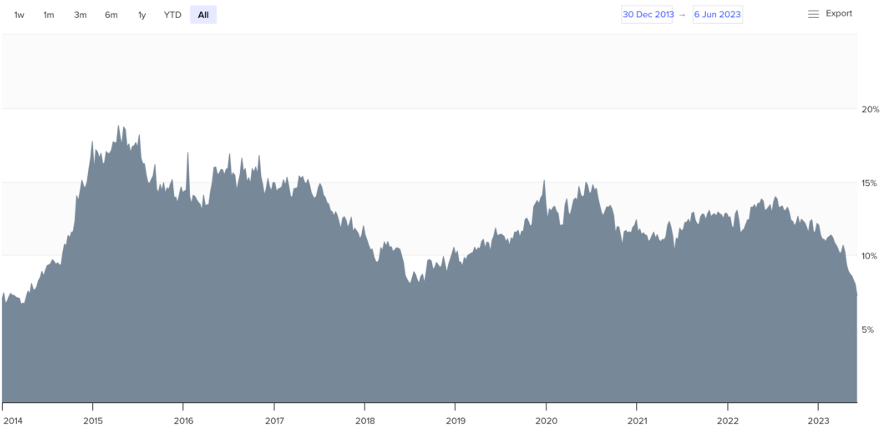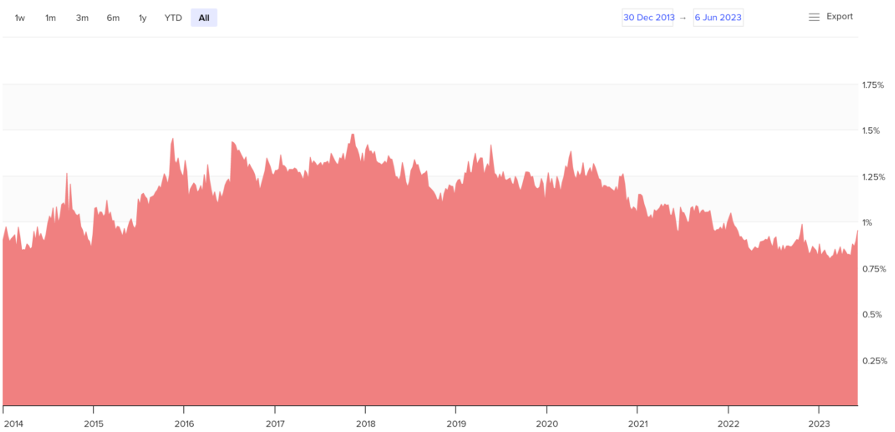
If your site has seen a decrease in referral traffic from social media in last few quarters, you’re not alone. As the digital and social landscapes continually evolve, a significant change has reared its head this year: declining referral traffic from major social media platforms like Facebook and X (formerly Twitter). Meanwhile, LinkedIn remains consistent and emerging platforms like TikTok are changing the way other platforms curate their algorithms. For anyone managing a website, these changes are not a surprise, but understanding the evolving dynamics is pivotal in creating a strategy to keep web traffic up and business flowing.
The Decline
Over the past year, referral traffic from Facebook and X has been on a steady decline.
Around May, Facebook parent company Meta made an algorithm change that deprioritized link sharing as a means of decreasing news-sharing on the site. According to data from Digiday, Facebook referrals to news websites have decreased by about 80% since May. Trends show that this decrease may not be permanent, as Facebook tends to have a cyclical relationship with driving referral traffic to sites.

Data and visualization via Echobox (2023).
X
X’s referral traffic has been on a steady decline since September of 2020. Unlike Facebook, this platform does not have a cyclical pattern with driving referral traffic. With the app recently removing headline previews due to owner Elon Musk’s desire to encourage direct posting and video content, it’s likely this decline will only increase.

Data and visualization via Echobox (2023).
Short-Form Video’s Rise
Another significant driver of the decline in referral traffic has been the surge in short-form video content. Meta has adopted AI-based content recommendations, following in the footsteps of platforms like TikTok, to tailor content to each user’s interests. Cumulatively, Facebook and Instagram now see over 200 billion video views per day. This shift has transformed many social media channels into entertainment media. As a result, fewer people are clicking on links, and the platforms are prioritizing video content.
Adapting to the Changes
Given this decline, it may be a good idea to reassess your digital strategy and explore different avenues to keep your site traffic up.
Link in Comments
Some companies have switched to posting a description of an article in an image post with the link in the first comment. While this can enhance reach initially, it may not significantly impact link clicks.
Reconsider Your Platform Mix
Now more than ever, short-form video is worth exploring. Though short-form video platforms aren’t great for referral traffic, they can significantly increase brand awareness and diversify the markets that you’re reaching. If TikTok and Instagram aren’t best suited for your business’s goals, consider putting more into LinkedIn. At this mainstay in B2B digital marketing, the number of users is on the rise – its ability to drive referral traffic is only growing.
Reexamine Post Type/Frequency
Doubling your content output or increasing the focus on non-link-based content can be an effective way to adapt. By diversifying your content and posting more frequently, you can engage your audience in new and exciting ways, ultimately enhancing your digital marketing efforts, and increasing the likelihood of users visiting your site.
Direct Attention to Controlled Channels
Whether it’s a company app, a text subscription service, or an email newsletter, owned channels that you have control over go a long way in building brand loyalty. The more you can get people thinking about your brand, the more they’ll be inclined to visit your website or perform other desired conversions.
Increase Paid Efforts
While organic referral efforts for Facebook can be cyclical, paid advertising is a reliable way to drive users to your site. If your team has the budget, paid ads can provide a targeted approach to reach your desired audience, ensuring a steady flow of traffic and potential customers.
Conclusion
As referral traffic declines, it’s time to rethink how social media serves your branding and engagement efforts. While there’s no one-size-fits-all solution, the clear trend of declining traffic from Facebook and X underscores the need for a flexible approach. New methods to drive website traffic may be needed, as the days of relying solely on posting links are fading away. Whether you decide to focus attention on LinkedIn, divest from Facebook, or increase paid efforts, adapting to these changes is the key to staying relevant in today’s dynamic digital landscape.






